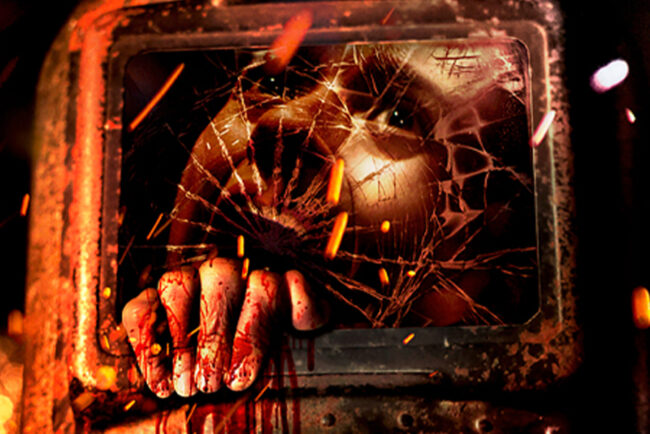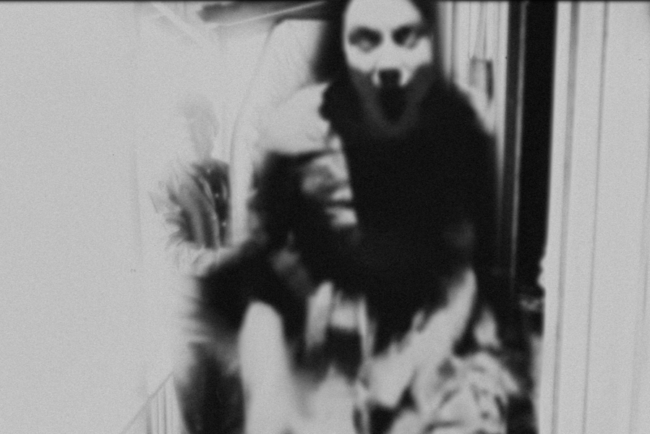
Claudio Simonetti has taught me a lot of things. As a member of the legendary Italian prog rock group Goblin, he helped to show me and the rest of the world just how awesome weirdo space rock could be in murder movies or films about witch-haunted dance academies. Signor Simonetti also helped to enlighten the rest of the world about the brilliant eccentricities of the Italian film industry or, to paraphrase screenwriter and horror historian Adam Rockoff’s latest book (The Horror of it All), just how crazy Italians are behind the camera or keyboard. As obvious as it might be now, it took the ‘70s and ‘80s for people outside of Europe’s boot to realize the link between awesome red sauce and excessive red paint on the screen.
But most importantly, Claudio Simonetti taught me that time zones can be a bitch. In order to conduct an interview with one of the world’s greatest living film composers, I had to make sure I called Mr. Simonetti via Skype at 12 p.m. No problem. Well, except for the fact that Italy is six hours ahead of the eastern reaches of the good old US of A. This means that I had to wake up sometime between wildly inconvenient and hilariously cruel. Add to this mixture a mandatory pre-call Skype message that had to go out an hour before the interview started, then I become something of an angry, sleep-deprived zombie not unlike one of Lucio Fulci’s dripping and bloated creations from Zombie Flesh Eaters. And I had to attept this three times before even getting Mr. Simenotti on the horn, too.
Please don’t mistake this for griping (well, at least not whining). Claudio Simenotti is without question one of the greatest film composers in the history of the horror genre, if not movies altogether. It was a pleasure to meet him no matter the hour, and during our brief discussion he answered all questions with a mixture of enthusiasm and erudition. The guy’s a good egg.
Plus, with Rustblade Record’s recent release of the original soundtrack to Lamberto Bava’s film Demons, a cult classic which this year is celebrating 30 years of existence, Simonetti has a lot to celebrate. Despite my lukewarm review of the album (which can be read here), it was ostensibly our reason for chatting in the first place.
“Demons was never well distributed, but whenever I’m at conventions, a lot of fans bring it up. I am amazed that so many young people are still following my career.”
While it makes sense that people, even people too young to know any better, follow Simonetti’s career, the lasting interest in Demons is a little surprising. While Dario Argento classics such as Deep Red, Suspiria, and Tenebrae are routinely (and rightfully) held up as masterpieces, 1985’s Demons is usually considered cinematic fast food. Instead of hamburgers and fries, think spaghetti and Berliner currywurst. Still, the editors at Indiewire felt compelled to label Simonetti’s original score for Demons as one of the “20 Greatest Original Horror Scores” of all time. Not bad considering the same editors spoke of the “absurd chaos” in Demons and the film’s problem with running “out of steam fairly quickly.” As for Simonetti, although he speaks highly of Demons, his favorite project is another overlooked example of Italian exploitation.
“My favorite is Jenifer from Masters of Horror.”
An episode from Showtime’s gem of a series directed by Dario Argento that’s based on a 10-page Bruce Jones-Bernie Wrightson comic from 1974? Now, that’s surprising.
Mr. Simonetti’s process for working on films as the appointed music man is a bit less surprising. Usually, even during the heyday of the original Goblin lineup, Simonetti wouldn’t start writing until the movie was finished or at least in post-production. After watching a cut of the final film, Simonetti would then go back and start crafting music to fit the images he had just seen. Rather than directors, screenwriters, or actors, Simonetti, like other composers, tends to work closely with film editors.
On other occasions, Simonetti merely gets a call or an email requesting his services. A recent example is the film The Editor, a comedy-horror homage to the Italian giallo genre that came out last year. When the creators of The Editor wanted Simonetti to add a little authenticity to their loving send-up, he gave them a theme and nothing more. Over Skype, Simonetti admitted that he has yet to even see The Editor.
Because of his stature, most filmmakers follow Argento’s approach and let Simonetti be his own boss. Recently, while working on the Argentinian film Necrophobia 3D, director Daniel de la Vega gave Simonetti only one instruction: “Yes, write the music you like.” Such is the life of a movie legend.
It’s not all roses and springtime in Roma, however. Tragically, the film industry in Italy is not the same as it was in the 1970s, when Italian cinema exploded with sex, violence, and big budgets. Believe it or not, according to Simonetti, films such as Deep Red were considered B films in their native land. They were first shown at small, independent theaters in Italy, and if they were lucky, they landed international distribution deals. For the most part, some of the best Italian horror films of the 1970s and 1980s spent years just as national entities that lived full-time in small movie houses in cities like Rome or Turin.
Nowadays, all the small, autonomous theaters are gone, replaced by big, American-style cineplexes. As a result, Simonetti has worked on numerous Italian productions that immediately go straight to DVD. And unlike their more famous forebears, today’s Italian horror maestros have to live up to such titans as Argento, Fulci, and Ruggero Deodato (director of the infamous Cannibal Holocaust) with less than half of their budgets. (Conversely, Simonetti, who is still close friends with Argento, Bava, and Deodato, says that these old school pioneers suffer today because “they don’t know how to make movies for less than one million dollars.”)
Thankfully, this downturn hasn’t affected Simonetti’s rate of production. Besides touring frequently with Claudio Simonetti’s Goblin, who play Simonetti’s famous scores in front of packed houses all across the world, he’s not only making music for himself, but he’s still in the composing game. Better yet, his working relationship with Argento is as strong as ever, and Simonetti, along with Japanese icon Akira Yamaoka, composed the music for The Sandman, Argento’s upcoming horror film based on the frightening short story by E.T.A. Hoffman that stars Iggy Pop. Simonetti’s Facebook page has all of the latest scheduled dates, just in case you’re ever in Rome and want to hear the soundtrack to Suspiria played in its entirety. If not, don’t forget that Claudio Simonetti’s Golbin will play this year’s Lunar Festival on Friday, June 5th.
Oh, one last thing: as it turns out, my biggest complaint about Rustblade’s version of the Demons soundtrack—that there are too many versions of the titular theme–was a decision made out of necessity. The reason why eight out of the twelve tracks on the 30th anniversary edition of the Demons soundtrack present different versions of the song is all about time.
“We had to rerecord the music because the original songs weren’t longer than thirty seconds. Demons did not have a lot of songs, and the original recordings never would’ve reached the length of a CD.”
And since Rustblade wanted an original soundtrack (hence, none of the Saxon or other ‘80s metal also featured in the film), we get an unrelenting army of pulsating Demons. Che figata!
















